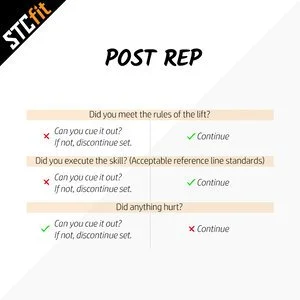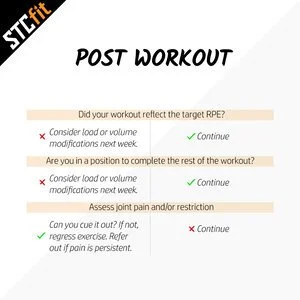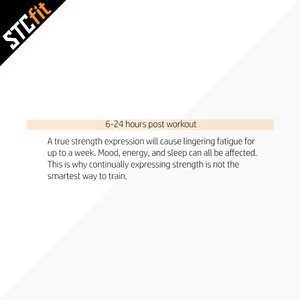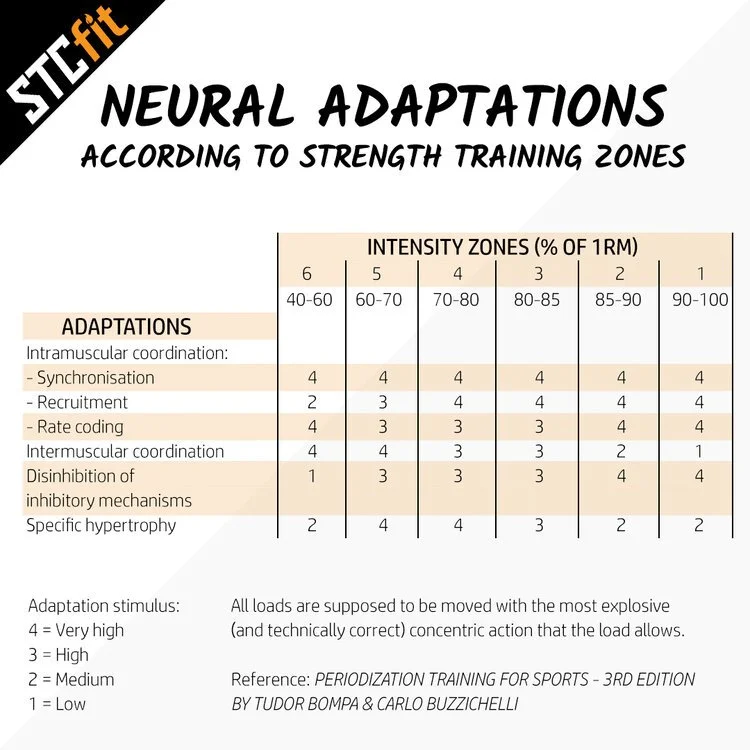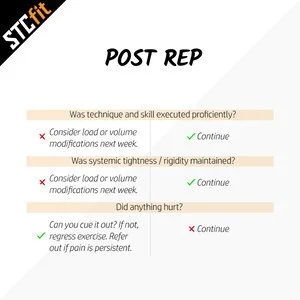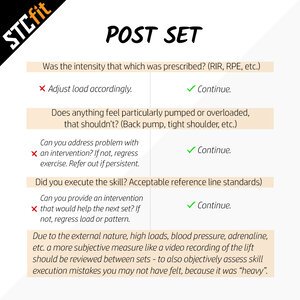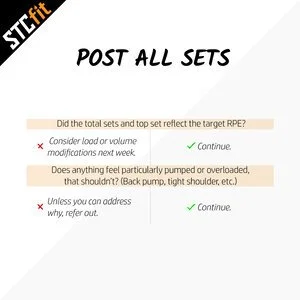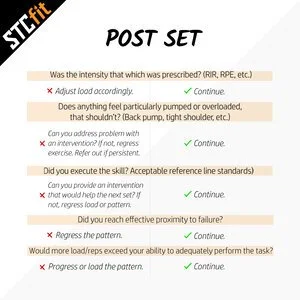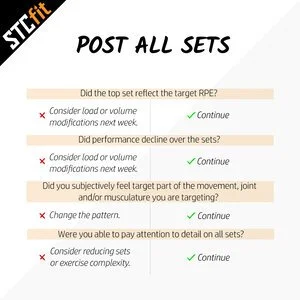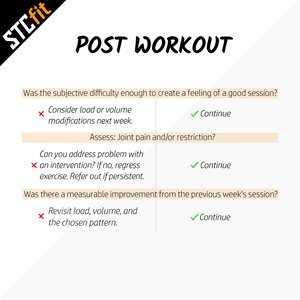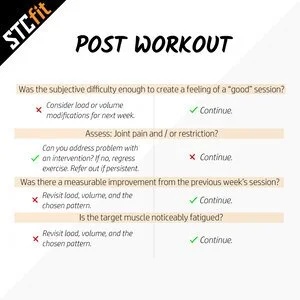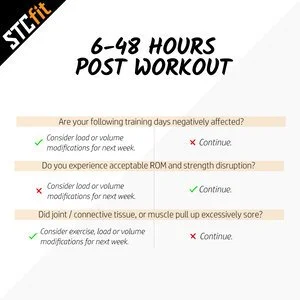Measuring Training Session Success
hroughout this article we will discuss a mental checklist that lifters and coaches can use to assess the effectiveness of their individual workouts as well as their overall programming. Our goal for this is to enable the lifter to provide better feedback to their coach and/or notes for program modifications as well as lead to the most effective workouts and long term outcomes.
When prescribing exercise selection and volume for the strength or physique athlete, there are typically 4 specific outcomes we are trying to achieve;
Strength Expression
Strength Centric
Movement Centric
Hypertrophy
Similar to what we see in programming, there is an overlap within these outcomes. If one was to perform a movement well while aiming to train strength, as a result it will reinforce good movement. If enough volume is executed this will also cause hypertrophy. In conclusion, focusing on executing one outcome will lead to getting the most out of each rep, of each set, of each exercise, in each workout and over each program.
5 Stages Of Review
Understanding the desired outcome for the exercise we are completing allows us to measure the effectiveness of our training. There are 5 stages at which we can stop to review and ask questions to measure the effectiveness of our training;
Post completion of a rep
Post completion of a set
Post completion of all sets
Post completion of a workout
6–48 hours post workout
The 4 possible goal outcomes we mentioned at the beginning will have different considerations at each of the stages of review. We will first unpack each stage individually before tying it all together with a case study example at the end.
Strength Expression
“Your execution on the platform will be the average of your execution in the gym.”
Thomas Lilley.
When we discuss strength expression we are typically referring to a 1 Rep Max (1RM). In the instance of beginner lifters, there are less review points for a max effort lift. For these lifters, key pointers we would recommend would include focusing on pre-lift routine, having a couple of powerful cues and essentially — don’t die.
Reviewing a session containing strength expression is primarily focused on gathering data for future training meso cycles as opposed to solely looking at the results of a max effort lift. We can achieve the best return on investment by viewing max effort lifts as a training destination as opposed to outcome.
Reflections:
During a powerlifting peak you may be expressing strength for weeks at a time. The above reflections allow you to know if you have overstepped the mark with prescriptions. It’s important to note that acceptable levels of fatigue differ during a peak compared to normal training times as shown in the post workout review stage.
Pain provides the most tangible feedback here, however skill and strength breakdowns will likely be evident during a max effort lift. If constant reminders are needed for a particular cue, it may suggest using a different movement to force the athlete into that cue. Eg. Driving the back into the bar to maintain thoracic integrity could point us towards a Safety Squat Bar (SSB) variation in the following mesocycle. This would create subconscious skill and as a bi-product reduce the consciousness required when the max is attempted again.
Strength Centric
It’s important to consider what we do in specific practice for expressing strength as we spend little time expressing strength in the form of 1RMs.
As previously mentioned, both improving movement pattern and building muscle will contribute to building your overall strength potential. This is because strength adaptations typically happen between 40% — 100% of our 1RM as shown in the table below.
Reviewing the table we can see that while executing loads around 85% of our 1RM and below, there is a decline in intramuscular coordination and disinhibition adaptations. On the flip side this is in favour of intermuscular coordination (movement pattern improvement) and hypertrophy. For the purposes of this discussion we’ll define exercises between 85% — 95% as “Strength Centric” (remembering expressing strength was 95%-100%).
At strength centric loads we are focused on producing the most force we possibly can. This generally leads to most of our cueing and thought processes being external rather than internal. This is an important consideration to have front of mind when working through the stages of review.
Reflections
Heavier phases of training allow the athlete to reflect on the volume, intensity and exercise selection choices made in the program.
If your training is causing you to feel extremely drained, you will need to make adjustments to decrease the level of fatigue induced and vice versa. These decisions will also need to consider the current goal in the periodisation plan as well as the level of experience, strength and preferences of the lifter.
Movement Centric
Movement centric exercise prescription will typically be in pursuit of addressing a strength/skill deficiency or to decrease the likelihood of injury.
In the example of a lifter rounding their upper back during a squat, let’s provide a framework to identify the two deficiencies.
Strength deficiency
Typically a strength deficiency will express itself when fatigue is accumulated or when a load is too high for the level of strength present in the athlete.
A failure from weight will show great technique and skill execution up to a point where the next jump in load causes a problem. For example progress from a subjectively perfect 100kg 3 rep squat to 105kg that causes a breakdown in the upper back. We can assume that by increasing the strength of the upper back, that will aid the ability to squat 105kg or perhaps to an acceptable standard of rigidity.
If a lifter is performing 5 sets of 5 reps and we see rounding of the back on reps 4 and 5 on set 4 and also again on reps 3, 4 and 5 of set 5 — it is plausible to assume it is probably a strength deficiency. We say “probably” as there is an inherent possibility that the mental fatigue is in fact causing the skill deficiency, (ie. the lifter is unable to muster the mental energy required to perform the quality of rep required).
Skill deficiency
Skill deficiency can be brought on by mental fatigue, however more commonly (particularly with newer lifters) skill deficiencies are due to poor intermuscular coordination.
This could be expressed as a break down in the movement intermittently. Referring to the previous example, the loss of upper back integrity could be happening on random reps across all sets and as a result you’ll often see improvement in execution the more reps/sets that are completed.
Injury Prevention
If we know there is potential for a lifter to lose upper back tension, sometimes moving the lifter into a controlled environment where we can expose them to “imperfect” positions to condition them in extremes points of range. A good example might be a kyphotic deficit KB deadlift. This is because load is limited and we can hone in on positions that otherwise might be dangerous. The intent is to create a well rounded lifter so that when there is a technique breakdown in the main lift, there is ability to adapt and control this range.
Considering all of the above it makes sense that prescriptions with the intent of injury prevention will be with loads in the 40–80% range to facilitate intermuscular coordination.
Keeping all of the above in mind, how does this affect our effective workout review?
Hypertrophy
Counter to the external focus that comes with strength centric goals, effective hypertrophy training is predicted based on the tension placed on the muscle. This is why the topic of “mind-muscle connection” comes up so frequently when discussing hypertrophy.
The truth is that for most people, the skill required to execute a main lift such as a squat as a specific hypertrophy focused exercise is too great. We’ll instead see most builders spend the majority of their time in a hack squat, leg press or lunge for example. This reduces the movement complexity to allow greater focus on creating tension.
Reflections
It’s important to note the distinct differences between hypertrophy focused training compared to strength centric and movement centric. We are more focused on making the exercise work for us, rather than making us work for the exercise.
Case Study
The program:
5 x 5 Back Squat — 2 Rep In Reserve
3 x 8 Split Squat — Lateral stability focus
3 x 10 Leg Press — Quad focus
SQUAT
After each rep:
Was technique and skill executed proficiently?
Rep 2 & 3 didn’t engage upper back by “bending the bar”.
Was there any pain?
No pain.
Was systemic tightness/rigidity maintained?
Lack of upper back rigidity affected the brace.
After each set:
Was the prescribed intensity met accurately (RIR/RPE etc)?
Achieved 2 RIR.
Have the correct muscle/muscle groups been recruited? Do the correct muscles feel worked?
Slight lower back pumps after missing upper back rigidity.
Objective record of the set such as video recording. This is to avoid subjective influence of reviewing skill execution.
Video confirmed a difference in upper back tightness caused due to a change in the routine.
Completion of all sets
Overall perceived exertion; considering both physical and emotional fatigue that may or may not impact the following exercises in the workout.
Total work was demanding but fresh enough to tackle the rest of the session.
Have the correct muscle/muscle groups been recruited? Do the correct muscles feel worked?
Back pump settled once set one skill errors were addressed.
SPLIT SQUAT
Completion of a rep
Was technique and skill executed proficiently?
Fell to the side.
Was there any pain?
No pain.
Was systemic tightness/rigidity maintained?
No — did not maintain brace.
Was it subjectively difficult to execute the specific skill we were targeting?
Very challenging.
Was the standard of movement high enough to create an effective adaptation or did I reinforce bad patterns?
Managed to complete the next rep to a better standard.
Completion of a set
Did you reach effective proximity to failure?
A couple of wobbly reps but managed to reach sufficient levels of fatigue.
Have the correct muscle/muscle groups been recruited? Do the correct muscles feel worked?
Hip and back feel good.
Would more load or reps exceed your ability to adequately perform that task?
Yes. There were some bad reps therefore no need to increase load at this point.
Completion of all sets
Were you able to pay attention to detail on all sets?
Concentration on brace and tightness improved set to set.
Did performance decline over the sets?
No, skill got better with more reps and sets.
Was fatigue noticed in the target part of the movement and or muscles that were targeted?
Solid glute and quad pump.
LEG PRESS
Completion of a rep
Did you feel the target muscle through the available range of motion and whilst maintaining mechanical tension?
Felt joint loaded, not much quad involvement.
Was there any pain?
Some knee pain.
Was enough external stability created to allow you to create maximal tension?
Stability was ok.
Completion of a set
Did you reach proximity of task action failure of the muscle (not systemic fatigue more so endurance or running out of skill)?
Felt more like systemic fatigue than quad task action failure.
Have the correct muscle/muscle groups been recruited? Do the correct muscles feel worked?
No real pumps.
Would more load or reps exceed your ability to adequately perform that task?
More load would just hurt the knee more.
*DO NOT PASS GO, DO NOT COLLECT $200!*
The feedback above shows the execution of the leg press is not achieving the desired outcome and an intervention should be made. Eg. Change feet position, change to a different leg press or change to different yet similar movements such as a hack squat.
Repeat the process until you find a position or piece of equipment that will be effective.
Completion of all sets
Were you able to pay attention to detail on all sets?
After changing to a hack squat I found my groove.
Did performance decline over the sets?
Quads were smoked and less reps were achieved over the sets.
Is fatigue noticed in the target muscles?
Yes.
Did your “pump” continue to improve across all sets?
Continually increased pump.
Completion of a workout
Was the subjective difficulty enough to create a feeling of a “good session”?
Ironed out some kinks through the entire workout and managed to complete quality work.
Was there a measurable improvement compared to the previous week’s session?
First week of the program.
Did you experience joint pain, niggle and/or mobility restrictions?
No unexplained issues.
The 6–48 hours after a workout
If joint pain is present, continue to monitor.
No issues
Are you experiencing appropriate levels of fatigue in decreases of ROM?
Progressive DOM’s for a couple days, nothing inhibitory.
Are there noticeable disruptions in other physical tasks?
Stairs and getting up and down off the couch were a real challenge.
Interventions:
Looking into the workout review we can assess, review and perhaps now make adjustments to the following weeks training session.
The squats indicated a bracing issue via the external cue of bending the bar and engaging the upper back and lats into the brace. Casing some issues early on in the set of the squats. This lack of bracing showed up in the split squats causing an increased challenge of maintaining balance and reducing the effectiveness of the movement.
A possible intervention here may include adding an exterior loaded squat pattern during the movement preparation phase of the program. Personally I like a front rack KB or counter balance squat depending on the strength of the athlete.
The first two movements show the capacity to return the training outcomes we are looking for if we can correct this issue effectively. The leg press however did not. We were able to find a viable alternative in the hack squat machine although consideration needs to be paid to why pain was present during the leg press.
Some leg presses are notoriously poor to set up for when taking into consideration torso, femur and tibia length variations. This means some machines just generally suck for individuals and are great for others. In this scenario we would be looking to see if the knee pain was present at any other time during training. If it were to rear its head again we would need to refer out and get to the root cause of the issue.
Reviewing the post session we saw a good level of fatigue suggesting we are in the sweet spot of not too hard and not too easy from a recovery standpoint. The joints in question all held up well and we were able to complete the regular training as scheduled. As it was the first week of the program we might consider increasing the volume, load or intensity of the coming weeks to ensure sufficient challenge is created to induce adaptations.
Applying This To Your Coaching/Lifting
After reading this article we should have the following abilities;
Identify the 4 motives behind exercise prescription.
Have a basic protocol to assess the effectiveness of a rep, set, exercise, workout and program.
Be able to ask for or provide feedback on the objective effectiveness of a session.
Understand the concept well enough to add in your own points of review when assessing the effectiveness at each of the five intervals.
My hope for you after reading this article is to walk away keen to investigate these ideas in greater detail. How do you progress and regress exercises? What to do when pain is present? Am I overdoing my training or cutting myself short?
If you have any questions, as always reach out in the comments or hit me up on the socials.
Lift smart, lift hard, lift long.


